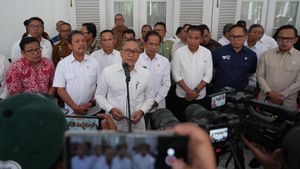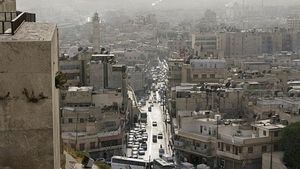JAKARTA - The presence of cassava in the archipelago is full of blessings. The proof is that the colonial government of the Dutch East Indies was lucky. Dry cassava (gaglek) is one of the important commodities. For the native people, let alone. Support additional food sources.
This view did not last long. Everything changed during the Japanese colonial period. Cassava is transformed into staple food. Replacement of rice and corn. The bad news is that the narrative of high consumption of cassava is a sign of expanding poverty in the archipelago.
Singkong or what is commonly called cassava is not a native plant of the archipelago. The arrival of Portuguese to the archipelago is behind it. They brought a cassava from South America. In fact, cassava can grow. The spread to the archipelago began massively in the 1850s.
Slowly cassava was able to win the hearts of the bumiputras. They use the basins as an additional food source. In Java and Madura, let alone. The planting is growing rapidly. The cassava is hailed by the bumiputras to have almost the same position as potatoes in western countries.
The potential benefits of cassava have also reached the colonial government's circle. The production of a basin that can reach 6 million tons a year is behind it. The Netherlands considers cassava, especially its processing as flour, which can bring considerable profits.
Massive planting was also carried out. The effort was successful. Cassava can be one of the export commodities of the Dutch East Indies. The cassava management center is growing. The factory is owned by many Chinese and natives.
But in addition, most of these plants are provided to produce tapioka in factories most of which are owned by the Chinese people. In this relationship, tapoka flour manufacturing is a serious competitor to potato flour. Tapioka flour produced by the bumiputra factory is referred to as village Tepung or Bumiputra flour, this flour is of low quality. To achieve quality of export feasible flour, it still has to go through final processing again to produce textured flour such as snow crystals or pearls.
The garbage or so-called ramps'' the remaining production products from this commodity can also be used as livestock food. Dry condensation (gaglek) also includes important export commodities. The processing is very simple and exclusively carried out by the Chinese and bumiputra. Finally, the gapplek gaps'' processed from skinless cassava have become increasingly important during these last years. Gaplek's tepung in the export market is mainly used as raw material in alcohol distillation, "said J. Stroomberg in the book Dutch East Indies 1930 (2018).
Japanese colonialism changed everything. Rice and corn that initially overflowed became difficult to produce. Prices that began to soar became musbab. Those who are rich and very rich can access the staple food. As a result, many of the natives were unable to access rice and corn.
The Bumiputras also took the initiative to start planting a variety of plants at home. Sweet potatoes, tomatoes, spinach, and the most important thing is cassava. Food, which is widely known as cassava, is like a class. The food was transformed into staple food in the Japanese colonial era.
There are those who replace the total rice with cassava. There are also those who plan to save rice by eating rice only once a day. The rest, only use cassava. This condition had to be done solely to survive.
All natives were forced to enjoy eating cassava as a staple food from their own gardens throughout the Japanese colonial era. They understand that the nutrition of cassava is believed to be insignificant, but there is no other way. Therefore, the high consumption rate of cassava does not indicate a good thing. This sign is actually considered a sign that poverty has been rampant in the archipelago.
Residents of the city can no longer buy clothes freely because this item disappears from the market. People who are quite rich don't have to wear burlap sacks like poor people, but gradually pants are cut to be used as two shorts. Old men wearing shorts walking on the streets becomes a daily sight, something that was very rare in the past.
Life is getting very heavy, because people's purchasing power is getting lower. Many of them can finally only wear pants from burlap sacks. Towards 1943 people start eating corn and cassava every day, because rice is drastically reduced in almost all cities," explained Purnawan Basundoro in the book contesting the City Space (2013).
The English, Chinese, Japanese, Arabic, and French versions are automatically generated by the AI. So there may still be inaccuracies in translating, please always see Indonesian as our main language. (system supported by DigitalSiber.id)













